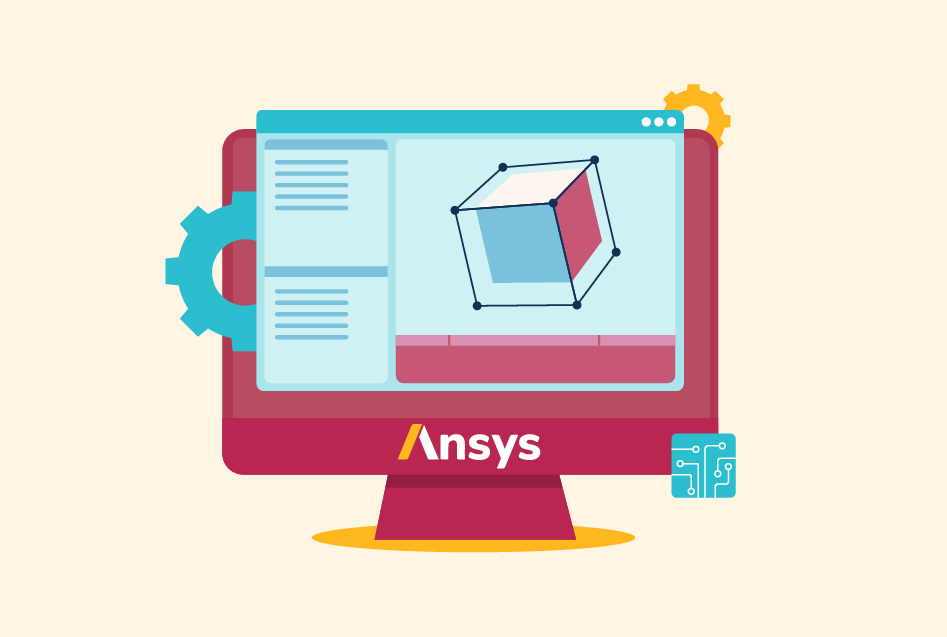Top 60+ VLSI Interview Questions And Answers In 2025
Integrating or embedding tens of thousands or more transistors on a single silicon semiconductor microchip is large-scale integration (VLSI). VLSI is a commonly used technology for designing integrated circuits (IC), components, and microchip processors. As a result, the majority of enterprises are now switching to VLSI.
Getting called for an interview is just the start of getting your dream VLSI job. But first, you must adequately prepare for the interview. To help you with the same, here are some VLSI interview questions and answers.
Basic VLSI Interview Questions & Answers for Freshers
Here are the top VLSI basic interview questions and answers for freshers:
Q1. What is the depletion region?
When a positive voltage is applied across the gate, the free holes (positive charge) repel from the area of the substrate underneath the gate. These free holes leave a carrier-depletion region behind when they are pushed down the channel region of the gate’s surface.
Q2. What are the four generations of Integrated Circuits?
- SSI (Small-Scale Integration Circuits)
- MSI (Medium-Scale Integration Circuits)
- LSI (Large-Scale Integration Circuits)
- VLSI (Very Large-Scale Integration Circuits)
Q3. What is Verilog, and how does it differ from other standard programming languages?
Verilog is a hardware description language (HDL), a specialized language to design and verify electronic circuits. Any standard programming language focuses on the logic and flow of a program, whereas Verilog describes the behavior and structure of electrical circuits and systems. It is more effective than standard programming languages for modeling and simulating hardware designs.
Q4. What are the various modeling techniques used in Verilog?
- Gate-Level Modeling
- Data-Flow Modeling
- Switch-Level Modeling
- Behavioral Modeling
Q5. What is Channel Length Modulation?
In practice, any further increase in VDS beyond the saturation point will affect the MOSFET characteristics. This is because as VDS increases, the pinch-off point of the channel begins to move from the drain toward the source. It shortens the effective channel length and this phenomenon is called channel length modulation.
Q6. How can binary numbers transmit or change from analog to digital signals?
A binary number has two possible values: 0,1. The ON state is represented by no.1, while the OFF state is represented by the number 0.
We can run these machines by carrying out arithmetic computations and sporting activities, and then combine billions of similar devices in one single machine or into one circuit using these binary numbers.
Q7. What are the basic differences between PMOS and NMOS technologies?
| PMOS | NMOS |
|---|---|
| The acronym stands for “n-channel metal-oxide semiconductor”. | The acronym stands for “p-channel metal-oxide semiconductor. |
| Built with an n-type source and drain and a p-type substrate. | Built with a p-type source and drain and an n-type substrate. |
| Electrons are carriers in an NMOS. | Holes are carriers in a PMOS. |
Q8. What are tie-high and tie-low cells used for?
To prevent direct gate connection to the power or ground network, tie-high and tie-low cells are used. These cells need a VDD (pulling down device), which connects to the tie-high cell when the power supply is high, and the tie-low cell links to the VSS (voltage source supply) when the power supply is low. Transistors work properly when the connection is made and no cell experiences a ground bounce.
Q9. How can metastability be prevented in VLSI?
Adding one or more synchronizing flip-flops to the synchronizer is the most typical method used in VLSI to prevent metastability. This method allows you to resolve metastable events in the first synchronizing flip-flop by stopping metastability for a full clock period (apart from the setup time of the second flip-flop).
Q10. What does VLSI Slack mean?
Slack time indicates if the design is functioning at the appropriate frequency and is defined as the difference between a signal’s desired and actual arrival timings. Positive slack means the design is on schedule but still has room for improvement, whereas negative slack denotes a time infraction.
Q11. What does VLSI MTBF mean?
MTBF is short for Mean Time Between Failures. It offers data on how frequently a specific component can malfunction. Additionally, it provides the typical period between two succeeding failures.
Q12. Why is the maximum number of gate inputs for CMOS gates often set at four?
It is because more stacks make CMOS gates slower. Therefore, the maximum number of gate inputs is often set at four.
Q13. What is a fault model? Give an example.
The fault model is an illustration of a potential flaw in the design, manufacture, or use of a piece of machinery, a product, or a circuit. A fault model in VSLI essentially depicts how faults happen and how they affect the circuit. For example – short circuit and open circuit faults.
Q14. What is a Sequential Circuit?
A sequential circuit is a logic circuit with inputs (X), logic gates (arithmetic circuits), and outputs (Y) (Z). It produces an output based on current and previous input variables, whereas a combinational circuit produces an output based only on the input variables.
Q15. What do you mean when you say DCMs? What is their purpose?
The abbreviation DCM refers to the Digital Clock Manager. It is a fully digital control system that relies on feedback to precisely preserve the clock signal’s features.
VLSI Interview Questions and Answers for Intermediates
Here are some VLSI interview questions and answers for intermediates.
Q16. What is metastability in VLSI?
Metastability is the phenomenon of an unstable equilibrium or state due to an asynchronous input signal changing near the clock edge. It is used in system design that violates the hole time requirements.
Q17. What are the required primary steps to resolve setup in VLSI and hold its violations?
- To integrate the logic and address this problem, optimizing and restructuring the logic among the flops is required.
- Flip-flops can be modified to reduce setup time and offer quicker device setup services.
- The launch-flop can be made faster and helps to correct the setup violations by being modified to get a good hold on the clock pin, this enables CK->Q.
- Slow down delay or the clock itself that records the activity of flip-flop by altering the clock’s network.
- An additional delay or buffer is always available, allowing the function to run with less delay.
Q18. What is MOSFET?
MOSFET stands for “Metal Oxide Silicon Field Effect Transistors”. It controls the voltage in a circuit. The use of MOSFET is to switch or amplify voltage in electronic circuits. It has three terminals – Source, Gate, and Drain.
Q19. What are the different MOSFET operating regions?
In MOSFET, there are primarily three operational regions:
- The excluded area
- Area of the triode
- The zone of saturation
In this case, the saturation zone is an amplifier, while the cut-off and triode regions serve as switches.
Q20. What kinds of skews are there that are employed under VLSI?
- Local Skew: The distinction between launching flip-flops and destination flip-flops is typically included in the local skew. This distinction aids in defining a timeline connecting these two.
- Global Skew: Discrepancy among the earliest components that reach the flip flop in the same domain of the clock is known as the global skew. In the skew, it must be noted. The clock remains the same for both. Therefore, the delays are not measured.
- Useful-Skew: The function of useful skew can be understood as specifying the delay while capturing routes of flip flop, which subsequently aids in creating a setting with exact criteria in capturing and launching the timing path.
Q21. What primary actions are needed to fix setup and hold errors in VLSI?
The primary actions that are needed to fix setup and hold errors in VLSI are:
- The logic in the gaps between flops is optimized and reorganized. To help with the answer to this issue, many logics are integrated.
- In addition, the flip-flops can be altered to offer quicker device setup services and shorter setup times. Making the launch-flop faster and helping to resolve setup violations by modifying it to get a good hold on the clock pin gives CK->Q. You can alter the clock network to speed up or slow down the clock that records flip-flop activity. You can add a delay or buffer to the function to reduce latency.
Q22. What are logic gates in boolean logic? What are the various gates used?
In logic gates, logical operations are performed on one or multiple binary inputs and give one binary output.
The various gates used in Boolean logic are:
- NOT Gate
- AND Gate
- OR Gate
- NAND Gate
- NOR Gate
- XOR Gate
- XNOR Gate
Q23. What is the body effect?
The body effect in VLSI affects transistor behavior when its body or substrate is connected to a different voltage level than the source terminal. This creates an electric field, affecting the threshold voltage and the transistor’s performance and reliability. The difference in voltage between the body and source terminals can either make the transistor easier to turn on or harder to turn on, affecting the overall circuit’s performance.
Q24. What are various methods of preventing damage to the antenna?
Antenna damage occurs when the charge generated from one strip of metal to another during plasma etching builds up in one place. The strip length is directly proportional to the accumulated charge. Hence, if the strip is long, more charge is stored.
The following methods can be used to prevent damage to the antenna:
- A metal wire is constructed with a minimum of one metal over a protected layer by generating vibrations.
- The metal must be shaken to achieve an etching effect.
This is because other metals will come off if you neglect to take measures when etching metals.
You can prevent this by adding blocking diodes to the gates used in your circuit.
Q25. What is threshold voltage?
The threshold voltage is the value of the voltage between Gate and Source, or VGS, at which a sufficient quantity of mobile electrons accumulate in the channel region to form a conducting channel (voltage is negative for PMOS and positive for NMOS).
Q26. What are the required actions to achieve a design that improves yield?
Manufacturing tolerances must be reduced to better achieve yields. As a result, the circuit performance will be high and the parametric gain will be low. This decrease is because of process variability. Following actions should be taken:
- Create powerful lancet files consisting of shorting and spacing rules. This includes all privileges that should be granted to users.
- Look for lithographic problem areas which consist of sharp cuts in the design.
- Use redundant vias for decreasing current and barrier breakage.
- Decoupling capacitance can be optimally placed so that overvoltage is reduced.
Q27. What is the difference between synchronous and asynchronous resets?
| Synchronous Resets | Asynchronous Resets |
|---|---|
| Provide filtering for the reset signal and are unaffected by glitches. | They are very sensitive to glitches. |
| Do not need to be stretched and are long enough to be seen as an active clock edge. | They get the highest priority and can have metastability issues. |
| Meets reset recovery time. | It is fast. |
| Require the presence of a clock to reset the circuit. | Can reset the circuit without the presence of a clock. |
Q28. What is the difference between Mealy and Moore state machines?
| Mealy-Machine | Moore-Machine |
|---|---|
| Output is dependent on both the present state and input. | Output is dependent only on the present state. |
| Fewer states compared to Moore Machine. | More states compared to Mealy Machine. |
| They react much faster on inputs and react within the same cycle as a clock. | More amount of logic is needed for decoding output leading to delays in the circuit. Their reaction is late usually to one cycle of the clock. |
Q29. What steps should be taken to design the optimal pad ring?
The following steps should be followed to design an optimal pad ring:
- Make sure you have corner pads on all corners of the pad ring.
- Ensure that the pad ring fulfills the ESD requirement and there’s common ground across all the domains.
- Ensure the pad ring meets the SSN requirement.
- Place transfer-cell pads in the cross-power domain for different height pads to have rail connectivity.
- Make sure that design has sufficient core power pads.
- Choose the drive strength of the pads based on the current requirements and timing.
- Ensure that there are separate analog ground and power pads.
- No connection pad is used to fill out the pad frame if there is no requirement for I/O’s. Extra GND/VDD pads also could be used. Ensure that no input/output pads are used with un-connected inputs.
- Make sure that oscillator pads are used for clock inputs.
- If the design requires source synchronous circuits, make sure the clock and data pads are of the same drive strength.
- Breaker pads will break the power ring and isolate the power structure across the pads.
- Make sure that the metal wire connected to the pin carries a sufficient amount of current, do check if more than one layer of metal is necessary to carry the maximum current provided at the pin.
- If required, place pads along with capacitance.
Q30. What is the function of the enhancement mode transistor?
Enhancement-mode transistors are also field-effect transistors because they rely on the electric field to control the shape and conductivity of the channel. They consist of charge carrier species within the semiconductor material environment. This uses a unipolar transistor to distinguish it from a single carrier type operating transistor, which also consists of a bipolar transistor.
Q31. What is the chained rearrangement function?
Due to the optimization techniques used, the congestion caused by cell placement makes routing in chain-order systems difficult. Tools are available to automate chain reordering to reduce the congestion created in the first stage. However, this adds to the problem of the chain system, which also overcomes the buffers that need to be inserted in the scan path. Longer hold times on chain rearrangements can introduce significant delays. Chain rearrangement allows cells to be in order while using different clock domains used to reduce lag due to random generation and placement of elements.
Q32. What is the difference between a latch-based and flip-flop-based design?
| Latch-Based Design | Flip-Flop-Based Design |
|---|---|
| They are level-sensitive. | They are edge sensitive. |
| They are more efficient. | They are less efficient. |
| They are more complex. | They are less complex. |
Q33. Explain the basic difference between pulling up and pulling down devices.
The device connected to pull the output voltage to the lower supply voltage is known as the pulling-up device while the device used to pull the output voltage to the upper supply voltage is called the pulling-down device.
Q34. Describe how Boolean logic controls logic gates.
In Boolean algebra, the true state represents the number 1, called logical one or logical high. A false state is represented by the number zero, called logic zero or logic low. Also, in digital electronics, a logic high is characterized by the presence of a potential.
Q35. What are the two types of procedural blocks in Verilog?
The two types of procedural blocks in Verilog are:
- Initial: The initial block is executed only once at a time.
- Always: This block loops repeatedly; as the name suggests, it always runs.
VLSI Interview Questions for Intermediates
Here are the top VLSI interview questions and answers for intermediates.
Q36. Define clock skew.
Clock skew in VLSI refers to the time difference between the arrival of the same clock signal edge at the clock pin of capture and launch flops. It can result from a variety of factors, including differences in input capacitance at the clock inputs of devices using the clock, variations in temperature and intermediate devices, material flaws, etc.
Q37. Define setup time violation.
When the data path is compared slowly at capture flop to clock captured, it is known as setup time violation. More technically, we can define setup time violation as M > Tclk – S. It is also known as timing violation as it signifies combination logical delay is large and that data change is slow.
Q38. Explain latch-up in CMOS circuits.
A low impedance or a short circuit channel generated between the ground and power rails of the MOSFET circuit, which results in a high current that leads to IC damage is known as a latch-up in VLSI. It is generally caused due to interaction of parasitic PNP and NPN transistors.
Q39. Explain the different types of routing in VLSI design.
Routing in VLSI design is making physical connections among signal pins by using layers of metal. Different types of routing are-
- Power Routing: In power routing, VDD, and VSS are routed.
- Clock Routing: The clock is routed after CTS.
- Signal Routing: All signal pins are routed.
Q40. Define testbench.
Testbench can be understood as an HDL module used to test another module called DUT- device. It contains statements that apply inputs to DUT and check if correct ideals are produced. The desired input and output patterns are known as test vectors.
Q41. Explain the purpose of a clock in a digital circuit.
A digital circuit depends on a clock to know how and when to execute the programmed functions. The clock can be understood as the heart of the design and the clock signals as the heartbeat.
Q42. Explain the difference between DFT and ATPG.
ATPG, or Automatic Test Pattern Generation, is used in DFT, which stands for design for testability. It helps in making test pattern generation more efficient in large circuits. ATPG is a prolonged and expensive process, which is why random test pattern generation is performed, decreasing testing time.
Q43. Explain the difference between scan-based and non-scan-based design.
| Scan-Based Design | Non-Scan Based Design |
|---|---|
| Scanned-based designs use flip-flops to create a scan chain, enabling serial shifting and observation of test patterns to enable efficient testing of complex designs. | Non-scan-based designs lack dedicated scan chains, relying on conventional testing techniques like functional testing or boundary scan methods, which may be less efficient for complex circuits. |
| Scan chains in scan-based designs provide high testability, enabling easy fault diagnosis and debugging. | Non-scan-based designs may have lower testability due to the different testing methodologies used and may not be as efficient for certain faults. |
Q44. What is floorplanning in VLSI design?
Floorplanning in VLSI determines the modules’ size, shape, and location inside the chip. This estimation delays the wiring congestion, providing the required groundwork for a layout. In brief, it is an essential step that decides the layout for the VLSI design.
Q45. Explain power analysis.
Power analysis can be understood as the power device consumes when powered up, but there are no signal-changing values. In most CMOS devices, the static power consumption is often due to leakage. When the devices are not entirely turned off, sub-threshold leakage occurs.
Advanced VLSI Interview Questions and Answers for Experienced Professionals
Here are some advanced VLSI design interview questions for experienced candidates.
Q46. What is SCR (Silicon Controlled Rectifier)?
An SCR is a four-layer solid-state device that controls the flow of electrical current. It is a type of rectifier controlled by logic gate signals and is a 4-layer 3-port device.
Q47. What is a Skew in VLSI?
The variation in clock arrival times across the chip is known as skew in VLSI. It is the time difference between the actual and expected arrival times of a clock signal.
Q48. What is a multiplexer in VLSI?
A combination circuit known as a multiplexer chooses one of the numerous input signals and directs it to the only output.
Q49. What is the difference between CMOS and bipolar technology?
CMOS technology allows for low power consumption and high output power, whereas bipolar requires a high current to run the system and activate the circuits.
CMOS technology offers more scalable threshold voltages than bipolar technologies, which offer lower threshold voltages. CMOS technology offers a high signal-to-noise ratio and high packing density. In contrast, bipolar technology allows a low signal-to-noise ratio to reduce high noise levels and lower component packing densities.
Q50. What is the difference between NMOS technology and PMOS technology?
PMOS consists of a metal-oxide-semiconductor fabricated on an n-type substrate and consists of active tracks called holes. These holes are used for charge transfer between the p-type and the drain. NMOS, on the other hand, consists of metal-oxide semiconductors and is fabricated on a p-type substrate.
When a high voltage is applied to the logic gate, the NMOS conducts and becomes active, while the PMOS requires a low voltage to activate. NMOS is faster than PMOS because the carriers used in NMOS are electrons that move faster than holes. The speed is twice that of holes. Therefore, PMOS is less susceptible to noise than NMOS.
Q51. What is the use of defpararm in Verilog?
Defpararm is a keyword used to change the defined parameter values at any module instance in the design. The parameter value is overridden by defparam at compile time.
Q52. What are the setup and hold times?
The setup time is the minimum time interval that the input signal must be stable (constant) before the clock sampling event is recognized correctly.
Hold time is the minimum interval during which the input signal must be stable (unchangeable) after the clock sampling event for the input signal to be properly recognized.
Q53. What are the value sets in Verilog?
Value sets, also known as the values required to describe hardware, are supported at four levels in Verilog. The four value-level conditions in a hardware circuit are:
- 0 Logic Zero, false condition
- 1 Logic One, true condition
- X Unknown logic value
- Z High impedance, floating state
Q54. What programming language is used in VLSI?
In VLSI, the programming language used to design an integrated circuit is HDLs (hardware description languages). HDL includes programming languages, such as Perl and TCL, VHDL, Verilog, and System Verilog.
Q55. What are the CAD tools in VLSI? Give some examples.
The acronym stands for “computer-aided design”. It is the use of computer systems to assist in the creation, modification, optimization, and analysis of a design. CAD tools in VLSI offer better visualization of product design. Some examples are the layout editor, the design rule checker (DRC), and circuit extraction.
Q56. Explain the different stages involved in the physical design of a VLSI chip.
Step 1: Creation of a gate-level netlist – This netlist will be the foundation of physical design and the result of the synthesis process.
Step 2: Partitioning – It helps in dividing the chip to separate blocks.
Step 3: Floorplanning – We have to calculate all the dimensions and then place them on appropriate spots on the chip.
Step 4: Placement – One needs to place standard cells in an optimal location inside the core boundary.
Step 5: Static Time Analysis – Validate the timing performance in the design.
Step 6: Clock Tree Synthesis – Distribute the clock on all elements of the design.
Step 7: Routing – Links blocks and cells.
Step 8: Physical Verification – Make sure that the layout design produced is valid.
Q57. Explain the difference between a standard cell and a gate array.
| Gate Array | Standard Cell |
|---|---|
| A semi-fabricated chip with repetitive blocks of disconnected transistors makes up the gate arrays. | The standard cell designs are created on blank wafers. |
| Gate array designs offer limited flexibility but are suitable for medium-complexity designs. | Standard cell designs provide higher flexibility, enabling designers to optimize performance targets and implement complex custom logic, making them ideal for high-performance applications. |
Q58. What is clock tree synthesis in VLSI?
A technique for evenly distributing the clock among all sequential components of a VLSI design is called clock tree synthesis. It is used to reduce skew and delay. For a better and more detailed understanding of the subject and a better grasp of questions, you can opt for a VLSI course.
Q59. What is physical verification?
Physical verification in VLSI is the process through which an IC or Integrated Circuit layout design through EDA software tools is verified. It is done to ensure logical functionality and the correct electrical manufacturability. It verifies the layout and post-layout netlist are equal, which means all connections specified are present in the layout.
Q60. Explain timing closure in detail.
In electronics engineering and VLSI, timing closure is the method by which the logic design of the clocked synchronous circuit that consists of primitive elements like sequential logic gates and combinatorial logic gates are changed so they can meet the timing requirement needed by the circuit. It satisfies the timing constraint and determines the chip speed.
Q61. What is a parasitic extraction?
Parasitic extraction can be understood as the calculation in both designed devices and the required wiring interconnect of the electronic circuit and its parasitic effect. The parasitic extraction method is developed for a faster timing closure in the pre-route design of VLSI.
Q62. Define and explain the power grid.
The power grid is made with metal layers and is the network that supplies power to the complete SOC design. SOC power grid should be strong enough to withstand any voltage drop across the chip and should protect it from damage. It can also be defined as the conducting path through which power is supplied to every component.
Q63. Explain the importance of DFM in VLSI design.
DMF or DMFA (Designing for Manufacturing and Assembly), is a very important and essential part of the development cycle of a product which involves the design optimization of the product and its assembly and manufacturing process. It integrates the requirement of the design of products with the production method.
Q64. Explain a high-speed design.
High-speed designs can be understood as a system that transports data between their components by using high-speed digital signals. Though most digital designs consist of both slow-speed and high-speed digital protocols, the system will work faster when the signals are fast, increasing its efficiency.
Q65. What is a place and route in VLSI design?
Place or placement is the method through which standard cells are placed in the design. It helps in deciding the location of each standard cell in the design. However, it does not place that individual standard cell available in the synthesized netlist. Routing in VLSI design is making physical connections among signal pins using layers of metal.
Conclusion
VLSI is a complex and dynamic field that requires a deep understanding of hardware design principles, physical design considerations, and programming languages. People using VLSI design play a critical role in designing and optimizing chips for various applications, such as consumer electronics, medical devices, automotive, and aerospace. The interview session in VLSI design could range from beginner to advanced, depending on the experience of the candidate.







